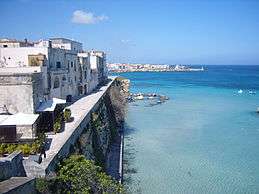544
| Millennium: | 1st millennium |
|---|---|
| Centuries: | 5th century · 6th century · 7th century |
| Decades: | 510s · 520s · 530s · 540s · 550s · 560s · 570s |
| Years: | 541 · 542 · 543 · 544 · 545 · 546 · 547 |
| 544 by topic | |
| Politics | |
| State leaders – Sovereign states | |
| Birth and death categories | |
| Births – Deaths | |
| Establishment and disestablishment categories | |
| Establishments – Disestablishments | |
| Gregorian calendar | 544 DXLIV |
| Ab urbe condita | 1297 |
| Assyrian calendar | 5294 |
| Bengali calendar | −49 |
| Berber calendar | 1494 |
| Buddhist calendar | 1088 |
| Burmese calendar | −94 |
| Byzantine calendar | 6052–6053 |
| Chinese calendar | 癸亥年 (Water Pig) 3240 or 3180 — to — 甲子年 (Wood Rat) 3241 or 3181 |
| Coptic calendar | 260–261 |
| Discordian calendar | 1710 |
| Ethiopian calendar | 536–537 |
| Hebrew calendar | 4304–4305 |
| Hindu calendars | |
| - Vikram Samvat | 600–601 |
| - Shaka Samvat | 465–466 |
| - Kali Yuga | 3644–3645 |
| Holocene calendar | 10544 |
| Iranian calendar | 78 BP – 77 BP |
| Islamic calendar | 80 BH – 79 BH |
| Javanese calendar | 431–432 |
| Julian calendar | 544 DXLIV |
| Korean calendar | 2877 |
| Minguo calendar | 1368 before ROC 民前1368年 |
| Nanakshahi calendar | −924 |
| Seleucid era | 855/856 AG |
| Thai solar calendar | 1086–1087 |
| Wikimedia Commons has media related to 544. |

Otranto seen from the castle (2008)
Year 544 (DXLIV) was a leap year starting on Friday (link will display the full calendar) of the Julian calendar. The denomination 544 for this year has been used since the early medieval period, when the Anno Domini calendar era became the prevalent method in Europe for naming years.
Events
By place
Byzantine Empire
- Gothic War: Emperor Justinian I sends Belisarius back to the Ostrogothic Kingdom (Italy) with an inadequate Byzantine expeditionary force (4,000 men and 200 ships).[1]
- Belisarius defeats the Gothic army under King Totila, who unsuccessfully besieges the city of Otranto (southern Italy). After their retreat, the Byzantines march towards Rome.
- Justinian I issues a new edict condemning the Three Chapters. In Western Europe, Pope Vigilius refuses to acknowledge the imperial edict and is ordered to Constantinople.
Persia
- King Khosrau I unsuccessfully attacks the Byzantine fortress city of Dara. The siege of Edessa is repulsed, and the Persians are forced into a stalemate.
Africa
- Battle of Cillium: A Byzantine army under Solomon is defeated by the Moors on the border of Numidia. Solomon and his bodyguard are forced to retreat and are later killed.[2][3]
Asia
- February – Lý Bí is declared emperor and establishes the empire Van Xuân (modern Vietnam). His armies repel attacks from the kingdom of Champa.
- October – The Liang dynasty retaliates against Van Xuân, and sends an imperial army (120,000 men) under Chen Baxian to re-occupy the region.
By topic
Religion
- Jacob Baradaeus consecrates Sergius of Tella as patriarch of Antioch, opening a permanent schism between the Syriac Orthodox Church and the Eastern Orthodox Church.
Births
- Dugu Qieluo, empress of the Sui dynasty (d. 602)
- Jing Di, emperor of the Liang dynasty (d. 558)
- Yuwen Xian, prince of Northern Zhou (d. 578)
Deaths
- Dionysius Exiguus, inventor of the Anno Domini era (approximate date)
- Solomon, Byzantine general and prefect of Africa
- October 18 – Wenna, Cornish saint (approximate date)
References
- ↑ J. Norwich, A Short History of Byzantium, p. 77
- ↑ Kazhdan 1991, "Solomon", pp. 1925–1926.
- ↑ Martindale et al. p. 1175–1176; Bury & 1958 p. 145
This article is issued from Wikipedia - version of the 10/11/2016. The text is available under the Creative Commons Attribution/Share Alike but additional terms may apply for the media files.